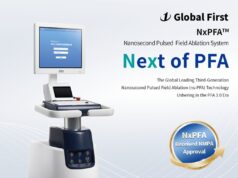
Researchers have detailed how artificial intelligence (AI) can be used to predict sudden cardiac arrest by studying patterns in electrocardiograms (ECGs) as well as differentiating between pulseless electrical activity and ventricular fibrillation.
The findings from researchers at Cedars-Sinai Health System in Los Angeles, USA are detailed in two papers published in Communications Medicine and Circulation: Arrhythmia and Electrophysiology
“Sudden cardiac arrest is a mostly lethal condition, and prevention will make the biggest impact, but we need to find novel clinical tools to make that possible,” said Sumeet Chugh (Cedars-Sinai Health System, Los Angeles, USA) senior author of both studies. “Using AI algorithms to improve prediction of sudden cardiac arrest could help doctors identify which patients might be at higher risk of experiencing this devastating condition.”
The Communications Medicine paper, authored by David Ouyang, Chugh and fellow investigators, details the use of a deep learning algorithm to study ECG patterns from people who experienced sudden cardiac arrest and people who did not.
The study included 1,827 pre-cardiac arrest electrocardiograms from 1,796 people who later experienced sudden cardiac arrest. It also included 1,342 electrocardiograms taken from 1,325 people who did not experience sudden cardiac arrest.
The investigators found that the model more accurately predicted who would experience out-of-hospital sudden cardiac arrest than did the more conventional method, the ECG risk score.
“The entire digital electrocardiogram signal performed significantly better than a few of its components,” said Chugh, who is also the Pauline and Harold Price Chair in Cardiac Electrophysiology Research and associate director in the Smidt Heart Institute. “We plan to continue to study this AI method to learn how it could be used in a clinical setting.”
In the second paper, published in Circulation: Arrhythmia and Electrophysiology, Chugh along with fellow investigator Piotr Slomka and other colleagues trained an AI model to differentiate between two underlying causes of sudden cardiac arrest: pulseless electrical activity and ventricular fibrillation.
Pulseless electrical activity means that the heart’s electrical signals are too weak to produce a heartbeat. It cannot be treated with a defibrillator and often leads to death.
After the AI model reviewed patterns in electrocardiogram readings as well as patient characteristics, investigators were able to determine risk factors for both types of sudden cardiac arrest.
People who had pulseless electrical activity sudden cardiac arrest, for example, were more likely to have been older, overweight, have had anaemia, or experienced shortness of breath as a warning symptom. Those who had ventricular fibrillation were more likely to be younger, have had coronary artery disease or experienced chest pain as a warning symptom.
“We have ways of preventing sudden cardiac arrest through technologies like a defibrillator, but the challenge is knowing who is most likely to benefit from this intervention,” said Lauri Holmstrom, a visiting postdoctoral scientist at Cedars-Sinai and first author of both studies. “These findings could help cardiologists identify which patients are likely to have a pulseless electrical activity sudden cardiac arrest or ventricular fibrillation sudden cardiac arrest and help them prevent these events from occurring.”
The AI models used in both studies were trained, tested, and validated using data from two ongoing studies of sudden cardiac arrest founded and led by Chugh: the Oregon Sudden Unexpected Death Study and the Ventura Prediction of Sudden Death in Multi-Ethnic Communities (PRESTO) study.
“These studies exemplify the potential for AI to detect patterns in the body that the human eye and standard medical tests cannot,” said Paul Noble. “We are getting closer to being able to use AI to prevent dangerous events such as sudden cardiac arrest.”









